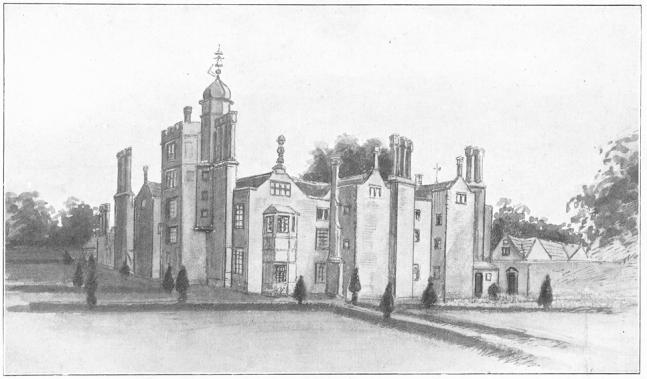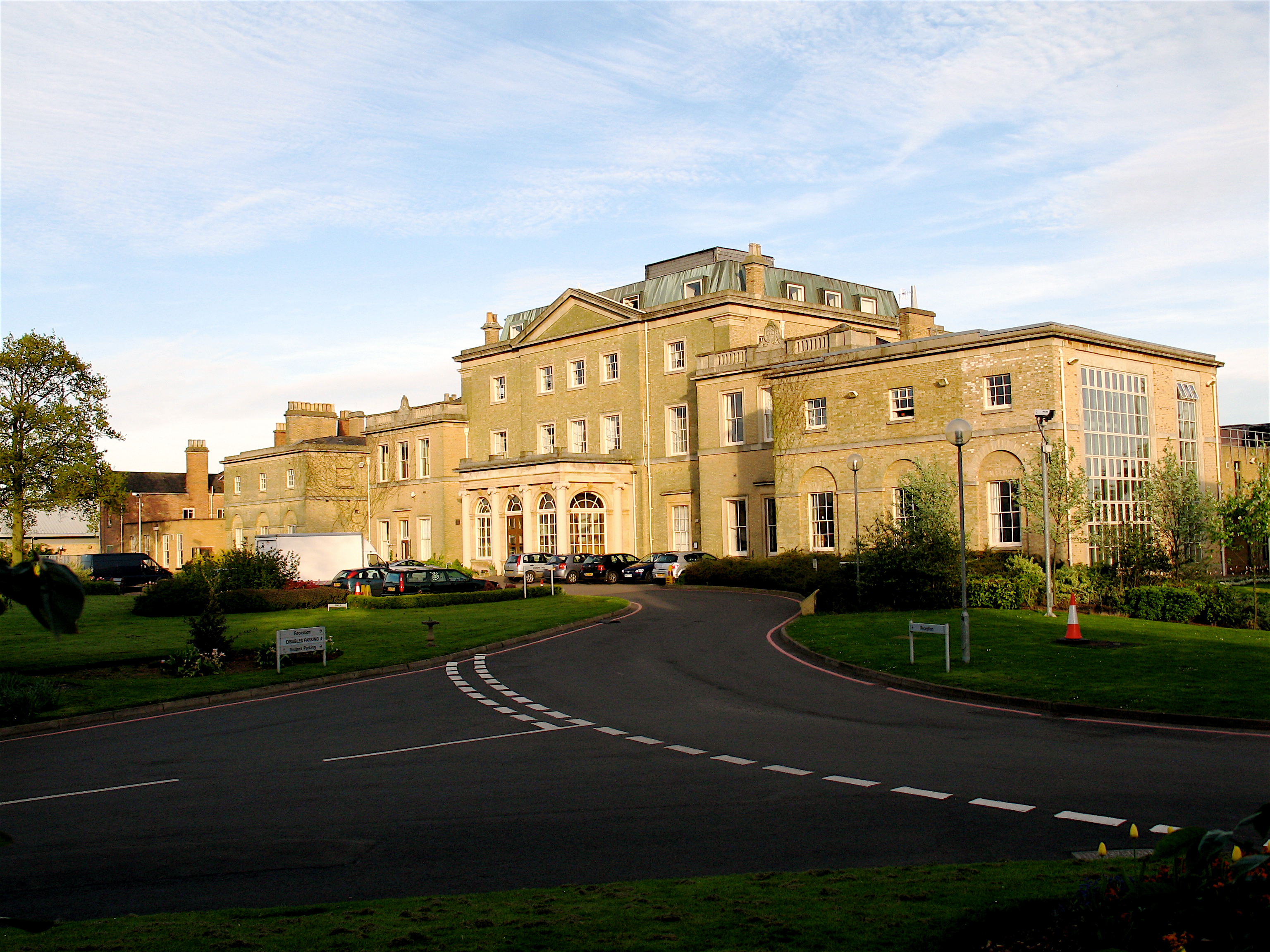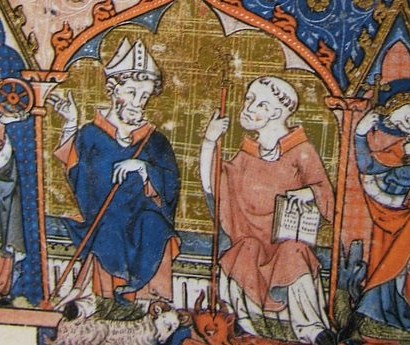|
Hindlip
Hindlip or Hinlip is a village and civil parish north east of Worcester, in the Wychavon district, in the county of Worcestershire, England. In 2011 the parish had a population of 180. The parish touches Tibberton, Martin Hussingtree, Salwarpe, Oddingley, Warndon and North Claines. Features There are 15 listed buildings in Hindlip. Hindlip Hall, a stately home originally built in 1563, rebuilt in 1820 following its destruction by fire is the headquarters of the West Mercia Police. St James's Church is a 15th-century parish church which is no longer supported by the Church of England (since 1997), but is now the church for the constabulary.Genealogy and Heraldry accessed 7 July 2008 History The name "Hindlip" means 'Hind leap'. Hindlip was recorded in the |
Hindlip Hall
Hindlip Hall is a stately home in Hindlip, Worcestershire, England. The first major hall was built before 1575, and it played a significant role in both the Babington and the Gunpowder plots, where it hid four people in priest holes. It was Humphrey Littleton who told the authorities that Edward Oldcorne was hiding here after he had been heard saying Mass at Hindlip Hall.Humphrey Littleton , gunpowder-plot.org, accessed 7 July 2008 Four people were and the owner at that time barely escaped execution himself due to the intercession of Lord Monteagle. It was later owned by ... [...More Info...] [...Related Items...] OR: [Wikipedia] [Google] [Baidu] |
West Mercia Police
West Mercia Police (), formerly the West Mercia Constabulary, is the territorial police force responsible for policing the counties of Herefordshire, Shropshire (including Telford and Wrekin) and Worcestershire in England. The force area covers making it the fourth largest police area in England and Wales. The resident population of the area is 1.19 million Its name comes from the ancient kingdom of Mercia. The force represents a diverse range of policing environments from densely populated urban areas on the edge of Birmingham as well as Telford, Shrewsbury, and Worcester, England, Worcester, to sparsely populated rural areas, such as Herefordshire, which remains an important part of the force's responsibility. As of September 2017, the force has a workforce of 2,017 police officers, 223 Police Community Support Officers, police community support officers, 1541 police staff and 388 members of the Special Constabulary, special constabulary. The force has its headquarters in ... [...More Info...] [...Related Items...] OR: [Wikipedia] [Google] [Baidu] |
Martin Hussingtree
Martin Hussingtree is a small village situated between Droitwich Spa and Worcester in the county of Worcestershire, England. It is north of another village called Fernhill Heath. It is situated on a junction of the A38 and A4538. A public house called The Swan is located just north of the junction. Its name derives from two separate manors: Meretun (meaning farmstead by the boundary) and Husan Treo (boundary tree of lands belonging to Husa, a personal name). The village is within the area of the Hindlip, Martin Hussingtree and Salwarpe parish council. The churchyard of the Church of St Michael and All Angels contains the grave of Thomas Tomkins, a composer of sacred music in the time of Queen Elizabeth I Elizabeth I (7 September 153324 March 1603) was Queen of England and Ireland from 17 November 1558 until her death in 1603. She was the last and longest reigning monarch of the House of Tudor. Her eventful reign, and its effect on history ... and King James I ... [...More Info...] [...Related Items...] OR: [Wikipedia] [Google] [Baidu] |
Salwarpe
Salwarpe is a small village and civil parish in the Wychavon district of Worcestershire, England, less than two miles south west of Droitwich, but in open country. The name is also spelled Salwarp, and in the time of John Leland was recorded as Salop. Since 2003, Salwarpe has shared a parish council with Hindlip and Martin Hussingtree. History A Saxon charter of the year 817 records that Coenwulf, King of Mercia, granted the manor of Salwarpe to Denebeorht, Bishop of Worcester, and his Priory. By the 11th century, the grant had been alienated, and a nobleman named Godwine had possession of the principal manor of Salwarpe, while his brother Leofric, Earl of Mercia, was a lesser landowner there. As Godwine was dying about 1052, Saint Wulfstan, who was Dean of Worcester, persuaded him to give his manor of Salwarpe back to Worcester Priory, but Godwine's son Ethelwine (named in the Domesday Book as being in possession in the time of King Edward) repudiated his father's Will a ... [...More Info...] [...Related Items...] OR: [Wikipedia] [Google] [Baidu] |
Worcester, England
Worcester ( ) is a cathedral city in Worcestershire, England, of which it is the county town. It is south-west of Birmingham, north of Gloucester and north-east of Hereford. The population was 103,872 in the 2021 census. The River Severn flanks the western side of the city centre, overlooked by Worcester Cathedral. Worcester is the home of Royal Worcester, Royal Worcester Porcelain, Lea & Perrins (makers of traditional Worcestershire sauce), the University of Worcester, and ''Berrow's Worcester Journal'', claimed as the world's oldest newspaper. The composer Edward Elgar (1857–1934) grew up in the city. The Battle of Worcester in 1651 was the final battle of the English Civil War, during which Oliver Cromwell's New Model Army defeated Charles II of England, King Charles II's Cavalier, Royalists. History Early history The trade route past Worcester, later part of the Roman roads in Britain, Roman Ryknild Street, dates from Neolithic times. It commanded a ford crossing o ... [...More Info...] [...Related Items...] OR: [Wikipedia] [Google] [Baidu] |
Wychavon
Wychavon () is a local government district in Worcestershire, England. The largest towns therein are Evesham and Droitwich Spa; the council is based in the town of Pershore. The district also includes numerous villages and surrounding rural areas, and includes part of the Cotswolds, a designated Area of Outstanding Natural Beauty. The district's name references the Saxon Kingdom of Hwicce and the River Avon. The population in was . The neighbouring districts are Malvern Hills, Worcester, Wyre Forest, Bromsgrove, Redditch, Stratford-on-Avon, Cotswold, and Tewkesbury. History The district was created on 1 April 1974 under the Local Government Act 1972, covering the area of five former districts, which were all abolished at the same time: * Droitwich Municipal Borough * Droitwich Rural District (except parish of Warndon, which went to Worcester) * Evesham Municipal Borough * Evesham Rural District * Pershore Rural District (except parish of St Peter the Great C ... [...More Info...] [...Related Items...] OR: [Wikipedia] [Google] [Baidu] |
Mid Worcestershire (UK Parliament Constituency)
Droitwich and Evesham is a constituency in Worcestershire represented in the House of Commons of the UK Parliament. Further to the completion of the 2023 Periodic Review of Westminster constituencies, it was first contested in the 2024 general election. The constituency name refers to the towns of Droitwich Spa and Evesham. From 1983 to 2024, the constituency was known as Mid Worcestershire, with similar boundaries. Its Member of Parliament (MP) has been Nigel Huddleston of the Conservative Party since 2024, the former MP for Mid Worcestershire. Constituency profile Income levels are on average considerably higher than the national average and levels of rented and social housing are below the national average, particularly levels seen in cities. The constituency had 72,317 people aged 18 and over according to the 2001 census, when it was known as Mid Worcestershire, plus 39,645 households included the towns of Droitwich Spa and Evesham and the many semi-rural villages aro ... [...More Info...] [...Related Items...] OR: [Wikipedia] [Google] [Baidu] |
Stately Home
300px, Oxfordshire.html" ;"title="Blenheim Palace - Oxfordshire">Blenheim Palace - Oxfordshire An English country house is a large house or mansion in the English countryside. Such houses were often owned by individuals who also owned a Townhouse (Great Britain), town house. This allowed them to spend time in the country and in the city—hence, for these people, the term distinguished between town and country. However, the term also encompasses houses that were, and often still are, the full-time residence for the landed gentry who dominated rural Britain until the Reform Act 1832. Frequently, the formal business of the counties was transacted in these country houses, having functional antecedents in manor houses. With large numbers of indoor and outdoor staff, country houses were important as places of employment for many rural communities. In turn, until the agricultural depressions of the 1870s, the estates, of which country houses were the hub, provided their ow ... [...More Info...] [...Related Items...] OR: [Wikipedia] [Google] [Baidu] |
Villages In Worcestershire
A village is a human settlement or Residential community, community, larger than a hamlet (place), hamlet but smaller than a town with a population typically ranging from a few hundred to a few thousand. Although villages are often located in rural areas, the term urban village is also applied to certain urban neighborhoods. Villages are normally permanent, with fixed dwellings; however, transient villages can occur. Further, the dwellings of a village are fairly close to one another, not scattered broadly over the landscape, as a dispersed settlement. In the past, villages were a usual form of community for societies that practice subsistence agriculture and also for some non-agricultural societies. In Great Britain, a hamlet earned the right to be called a village when it built a Church (building), church. [...More Info...] [...Related Items...] OR: [Wikipedia] [Google] [Baidu] |
Deserted Medieval Village
In the United Kingdom, a deserted medieval village (DMV) is a former settlement which was abandoned during the Middle Ages, typically leaving no trace apart from earthworks or cropmarks. If there are fewer than three inhabited houses the convention is to regard the site as deserted; if there are more than three houses, it is regarded as a shrunken medieval village. There are estimated to be more than 3,000 DMVs in England alone. Other deserted settlements Not all sites are medieval: villages reduced in size or disappeared over a long period, from as early as Anglo-Saxon times to as late as the 1960s, due to numerous different causes. Reasons for desertion Over the centuries, settlements have been deserted as a result of natural events, such as rivers changing course or silting up, flooding (especially during the wet 13th and 14th centuries) as well as coastal and estuarine erosion or being overwhelmed by windblown sand. Many were thought to have been abandoned due to the ... [...More Info...] [...Related Items...] OR: [Wikipedia] [Google] [Baidu] |
Oswaldslow
The Oswaldslow (sometimes Oswaldslaw) was a Hundred (county subdivision), hundred in the English county of Worcestershire, which was named in a supposed charter of 964 by King Edgar the Peaceful. It was actually a triple hundred, composed of three smaller hundreds.Mason ''St Wulfstan of Worcester'' p. 16 It was generally felt to be named after Bishop Oswald of Worcester (died 992), and created by the merging of Cuthburgelow, Winburgetreow and Wulfereslaw Hundreds. The name is originally traced to Oslaf, a Bernician prince exiled from Northumbria, who, along with his brother Oswudu, allegedly helped King Penda of Mercia conquer the area in the mid 7th century. A local landmark was named after Oslaf, "Oslafeshlaw", or "the mound of Oslaf". The name of the mound was later changed to reflect Oswald's name when the location became the meeting place for the triple hundred.Mason ''St Wulfstan of Worcester'' p. 4 After the Norman Conquest of England, the forged charter of Edgar's was used ... [...More Info...] [...Related Items...] OR: [Wikipedia] [Google] [Baidu] |
Domesday Book
Domesday Book ( ; the Middle English spelling of "Doomsday Book") is a manuscript record of the Great Survey of much of England and parts of Wales completed in 1086 at the behest of William the Conqueror. The manuscript was originally known by the Latin name , meaning "Book of Winchester, Hampshire, Winchester", where it was originally kept in the royal treasury. The ''Anglo-Saxon Chronicle'' states that in 1085 the king sent his agents to survey every shire in England, to list his holdings and dues owed to him. Written in Medieval Latin, it was Scribal abbreviation, highly abbreviated and included some vernacular native terms without Latin equivalents. The survey's main purpose was to record the annual value of every piece of landed property to its lord, and the resources in land, labour force, and livestock from which the value derived. The name "Domesday Book" came into use in the 12th century. Richard FitzNeal wrote in the ( 1179) that the book was so called because its de ... [...More Info...] [...Related Items...] OR: [Wikipedia] [Google] [Baidu] |







